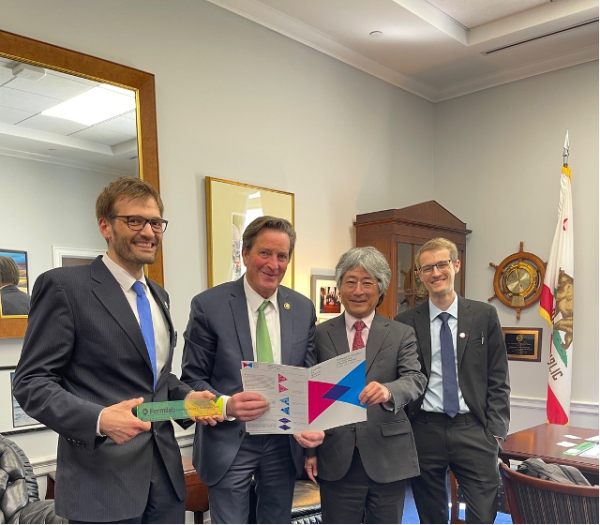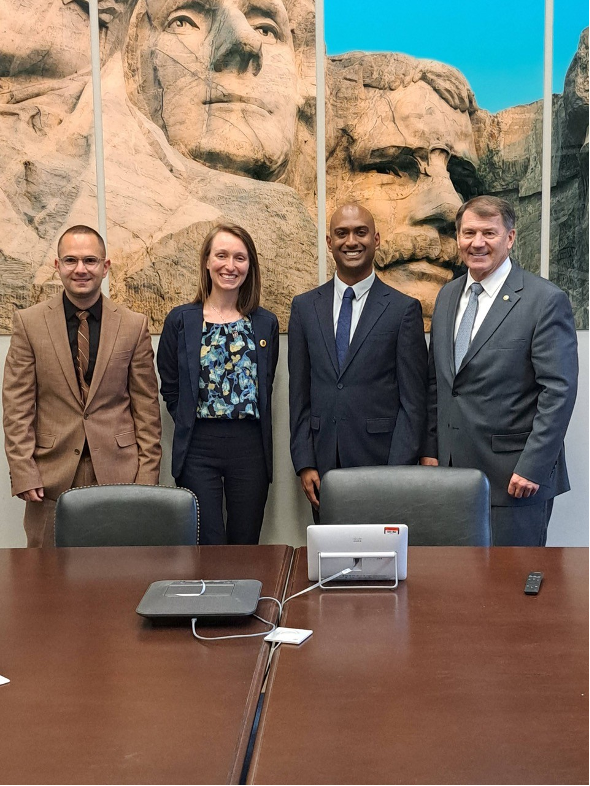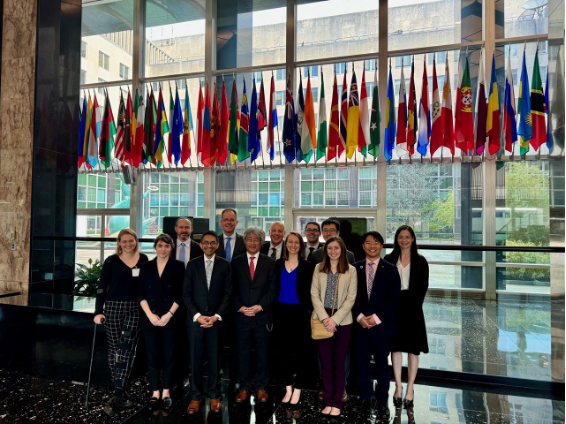SLAC Users Organization members recount their spring trip to Washington, D.C.
Planning for the next high energy physics community trip begins this fall.
By SLUO Executive Comittee
SLUO, UEC and US LUA participants of the 2024 D.C. trip on the steps of the capital.

Each March, members of the High Energy Physics (HEP) community around the nation embark on a trip to Washington D.C. during appropriations season. The annual trip gives researchers an invaluable opportunity to engage with policymakers and advocate for robust funding and support for the exciting HEP research program in the United States. This year, 15 members of the SLAC Users Organization (SLUO) joined a total delegation of 71 scientists from the User Executive Committee (UEC) at Fermilab and the U.S. Large Hadron Collider User Association (US LUA) for the annual trip.
The participants, mostly early career researchers who are enthusiastic about the future of HEP, had the chance to engage in substantive discussions with representatives from executive branch offices including the Department of Energy, National Science Foundation, the Office of Management and Budget, the Office of Science and Technology Policy and the State Department.
From Left to Right: Luigi Marchese, Rep. John Garmendi CA-08, P5 Chair Hitoshi Muryama, Stanford Graduate Student River Robles.

The HEP delegation contacted 99% of congressional offices and met with 71% of the offices. Delegates logged many miles each day walking the halls of congressional office buildings and criss-crossing the Capitol. In many cases, HEP scientists met directly with representatives and senators. These interactions were rewarding and enlightening.
The face-to-face interactions with congressional offices allowed the scientists to personalize the research they conduct and underscore the importance of continued federal funding. The primary goals were to express gratitude for past support, outline the community’s funding needs for the upcoming year, and convincingly demonstrate that the US HEP program has a well-defined strategy to maintain global leadership in this cutting-edge field of science. Crucially, the trip highlighted how research dollars are wisely invested, yielding both short- and long-term economic benefits for the nation.
From Left to Right: SLAC postdoc Maris Arthurs, SLAC Panofsky Fellow Kelly Stifter, LBNL Chamberlain Fellow Vetri Velan, South Dakota Senator Mike Rounds

SLAC Lead Scientist Brendan O’Shea summarized his interactions with congressional offices: “The feedback was very positive. We emphasized that we have done our homework and made hard choices, which everyone in Congress appreciates. One office commented that getting over 3,000 people to agree on the P5 Report was amazing. Multiple offices remarked that the High Energy Physics community is well organized. We definitely left a good impression.”
SLAC graduate student River Robles found his meeting with CA-08 Representative John Garmendi to be especially enriching: “This trip was a great opportunity to see how government spending in general and scientific funding in particular gets done. I was pleasantly surprised by the broadly positive interactions we had with all sorts of different offices, and it was fun figuring out which parts of high energy physics a given office resonated with most. Meeting with Rep. John Garamendi directly was one of the highlights of the trip. Whereas most of our meetings with various staff members lasted anywhere from five minutes to half an hour, Rep. Garamendi sat down with us for over an hour, asking questions about the science we do and giving us advice on how to best advocate for science funding to his peers."

Preparations for the 2025 D.C. trip will begin this fall. If you are interested in joining SLUO and attending, please check out the SLUO website for details.
